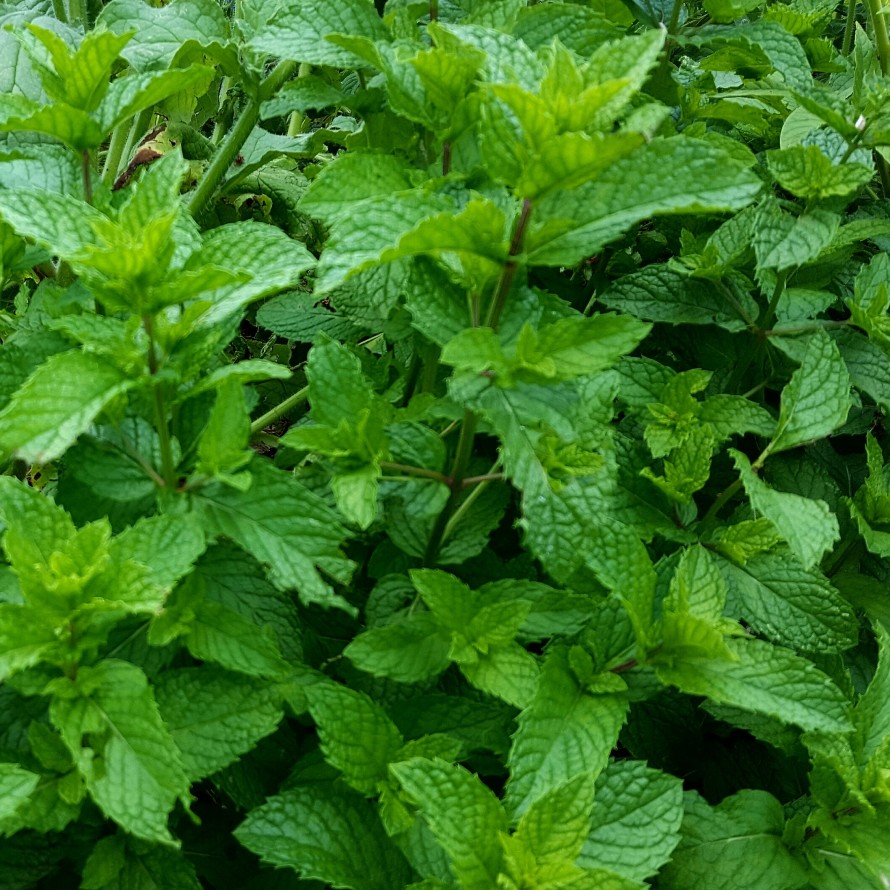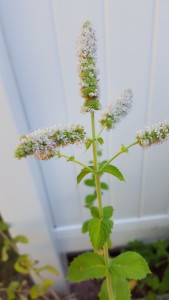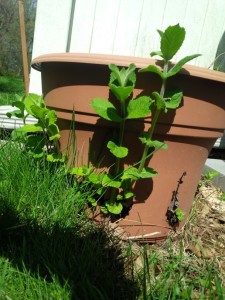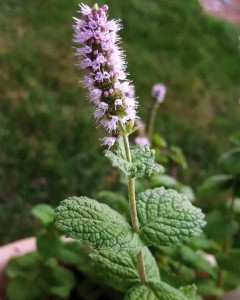Mints (Menthe spp) are a huge family of plants characterized by square stems. Members of the mint family can be found on every continent except South America and Antarctica. They have been used both medicinally and as culinary herbs for thousands of years. The ancient Greeks strew mint on their dirt floors to provide a refreshing scent to their indoor rooms. They referred to it as the herb of hospitality. In modern times, mint essential oil is used in the practice of aromatherapy. The essential oils are also used as flavorings in candies, breath fresheners, toothpaste and mouthwash.
Traditionally mint has been used as a medicinal herb for the treatment of stomach aches and chest pains. Peppermint tea is still recommended for stomach aches.
Mint has been used as a culinary herb all over the world for centuries. It is used in teas and other beverages, jellies, syrups and ice cream. In the Middle East, it is used to flavor lamb dishes.
The mints most commonly grown and used are peppermint (M. piperita), spearmint (M. spicata), chocolate mint (M. piperita f. citrata ‘Chocolate’), orange mint (M. piperita f. citrate) and apple mint (M. suaveolens). The tiny Corsican mint (M. requienii) is a creeping mint that is a popular ground cover planted between pavers.
Not all members of the mint family are invasive, but the popular culinary mints are all aggressive spreaders. They spread via stolens, or runners, both above and below the ground. Culinary mints should be grown in containers to keep them from taking over your garden.
Some sources suggest using a metal ring around the plants in the garden to check their spread and others claim that you can sink your mint containers in the ground leaving a 2inch rim above ground to keep them from spreading. My own experience is that those methods won’t work. Even mints grown in containers over a foot tall will find a way into your garden. Keep them deadheaded. Mint can be grown from seed!
Most mints are hardy perennials. Peppermint is hardy in zones 3 through 7 while spearmint is hardy is zones 4 to 11. Most mints grow from 12” to 24” in partial shade to full sun. All require moisture. Their native habitats are areas around water such as lakes and rivers. The best way to kill mint is to allow it to dry out.
You can grow mint indoors provided they have enough light. Supplemental light is recommended. They grow well under fluorescent lights.
Mints are best propagated by cuttings or division. They can be grown from seeds, but the results are highly variable. You may not get the mint you wanted. If you do want to grow mint from seed, you can start them outdoors in a partially shady moist spot in your garden or indoors 8 to 10 weeks before your last frost date. Germination should be within 12 to 16 days. Your plants can be transplanted to your garden after all danger of frost. Please note that while mint leaves are edible, mint seeds are poisonous and should never be eaten.
Harvesting of mint leaves can be done any time. The leaves have their best flavor before the plants flower. The best way to harvest mint is to cut down the entire plant to within 1” of the soil. It will rapidly grow back. You should be able to get 2 to 3 harvests each summer from your mint plants. Or, if you prefer, you can just harvest individual leaves throughout the growing season.
When harvesting your mint leaves, be sure to check them carefully for butterfly eggs. They are both the nectar plants and host plants for some species of butterflies. If you find any, simply wash them off. If you miss any, don’t worry. Butterfly eggs won’t harm you nor do they taste bad if you inadvertently eat them.
Mint leaves are usually used fresh. You can use them right after harvesting or store them plastic bags in your refrigerator for up to three days. Mint leaves can be frozen in ice cubes or dried for later use. To dry mint, you can either take your harvested stems and leaves and hang them upside down in bunches or you can strip the leaves and dry them in a food dehydrator. Dried leaves should be stored in tightly sealed containers that kept in a cool, dark, dry place such as a pantry.




